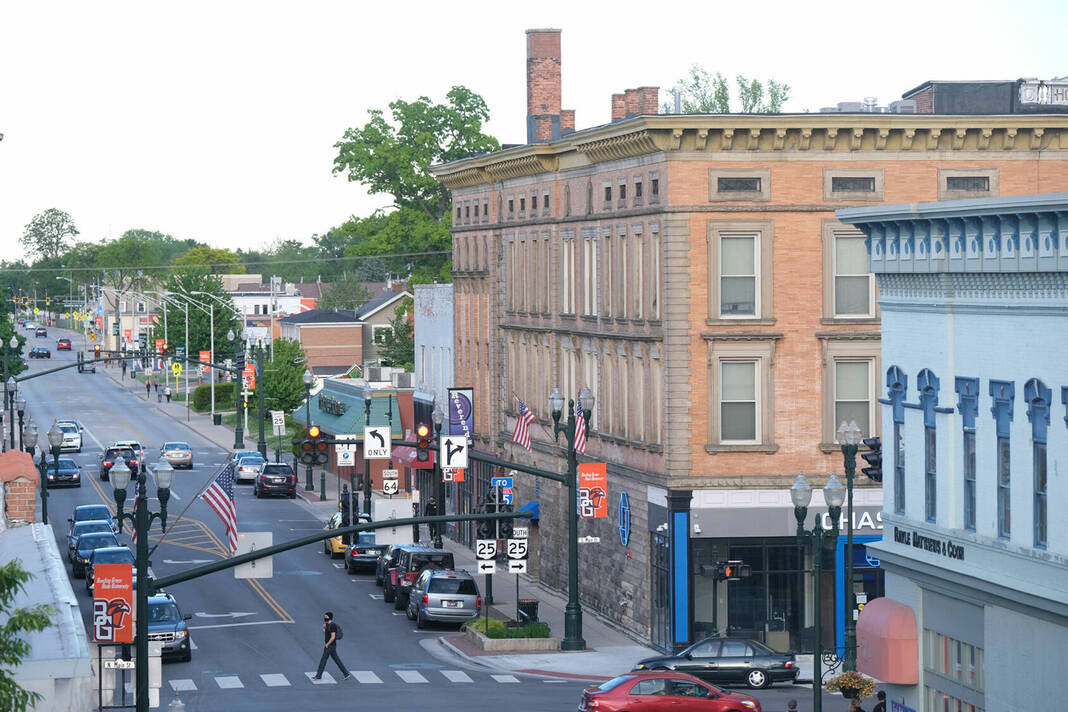
A resident on Tuesday presented a potential alternative to the controversial Pedestrian Residential Zoning district to Bowling Green City Council.
“The character and charm of the central residential neighborhoods are worth preserving,” said Rose Drain, as she discussed the Central Residential District.
The Pedestrian Residential District, frequently referred to as the “PR,” is included in the city’s proposed zoning update and has been a major source of comment at public meetings for a number of months.
The proposed district is a neighborhood area located in a rough, elongated donut around the downtown. The area is bordered by Poe Road to the north, Napoleon Road to the south, and on the east largely by Enterprise Street. To the west, it is substantially bordered by Maple Street, but it also extends to include portions along Eberly and Gorrell avenues. Among the Pedestrian Residential district’s major features is that it would allow some businesses to operate within that neighborhood district, and alter minimum lot dimensions.
On Tuesday, Drain said that she represented a group of over 20 residents “who have been working together to oppose the Pedestrian Residential District in the older neighborhoods of BG since early December.” She said there are over 600 people who have signed a petition opposing the PR.
Drain said that the area of the proposed PR is historic, with homes built in the 1800s through the mid-20th century.
“These areas are coveted in larger cities and when higher percentages of the homes are owner occupied, the property values are higher and enhance the overall value of homes in the city,” Drain said.
She said the neighborhoods in question “are within easy walking distance of downtown” and feature a variety of businesses and amenities.
Instead of the Pedestrian Residential District, Drain urged council to adopt the Central Residential District in place of the PR in the current draft of the zoning code update.
“The intent of the proposed Central Residential District is to promote walkable neighborhoods with residential uses,” she said. “Residents in this district should be able to walk safely, quickly and with enjoyment throughout the district and to businesses located nearby in the Central Business District and in Neighborhood Commercial Zones.
“The standards for properties in the Central Residential District will be consistent with what exists for many of the homes now in these neighborhoods,” Drain continued. “This is in contrast to the proposed Pedestrian Residential standards which would increase lot coverage and shrink setbacks.”
She also said that permitted uses in the Central Residential District would be consistent with maintaining the residential character of the neighborhood, including one-unit dwellings, parking in side- or rear-yards, adult group homes, and passive green space.
All business uses would be disallowed – though Drain said they are looking at whether bed and breakfasts might be conditionally allowed in owner-occupied homes – as would two-unit dwellings.
“There are so many homes in these neighborhoods which currently are divided into apartments,” Drain said. “These are income producing properties — in effect businesses. These older neighborhoods cannot sustain more demands on the wastewater and sewer lines, the already congested parking situation along the narrow streets, and the challenges of enforcing existing codes for the rental properties already dominating so many blocks of the proposed area.
Drain said that the city may want to keep a PR District in the code for future use, but her group feels that the Central Residential District neighborhoods are not the place for mixed-use zoning.
“Keep neighborhoods as neighborhoods: charming, diverse, historic, eclectic spaces to call ‘home,’” she said.
Later in the meeting, Council President Mark Hollenbaugh announced that three meetings have been scheduled regarding the new zoning code.
All will be held at the Veterans Building at City Park. The first will be March 13 at 6 p.m., and will be a work session with the city administration and council. At the meeting, council members will be able to advance suggestions or ideas on possible changes to the code.
A public forum will be held March 23 at 6 p.m.
On March 27 at 6 p.m., council will hold a final work session where ideas that have been brought forward in the first meeting, as well as any others, will be discussed and voted on by council prior to having the final zoning code put together for council’s consideration. Following that, it will be introduced as legislation, and a public hearing will be scheduled.

